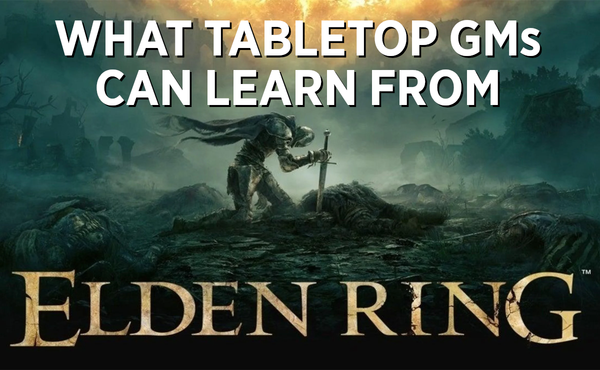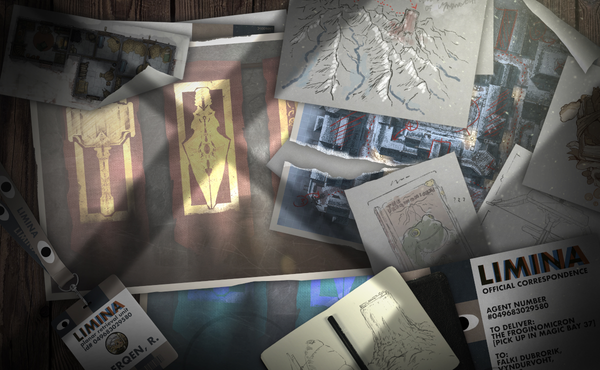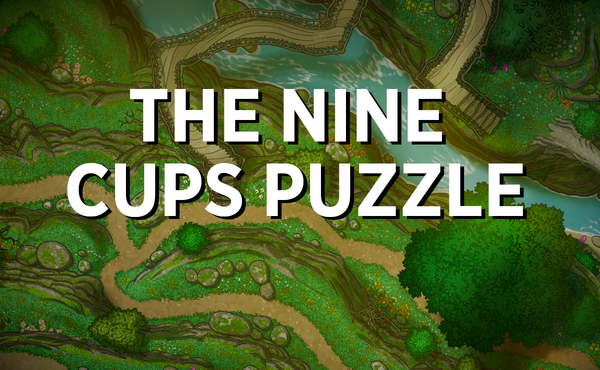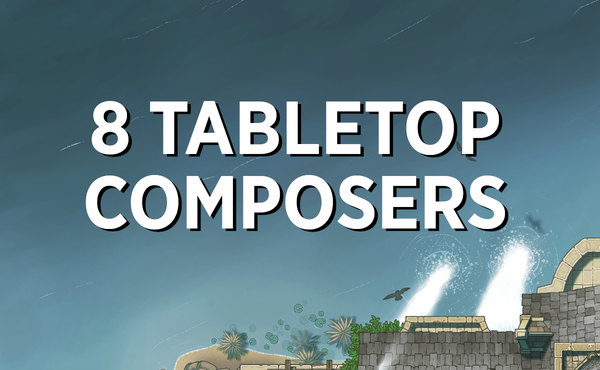Your Tabletop World Is Too Big
There is value in keeping your TTRPG campaign conveniently bounded.
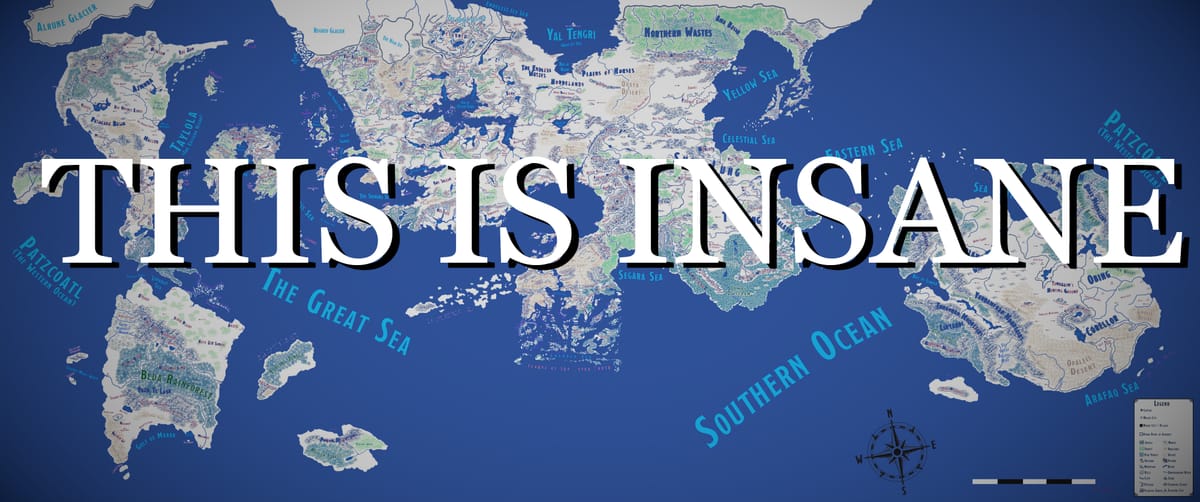
How big does your TTRPG campaign world need to be?
The default setting in D&D is Faerûn, which is but one continent in the world of Toril. Toril is—pardon my French—fucking huge.
If you’re playing Pathfinder, there’s a good chance your campaign world is Golarion. Golarion is also fucking huge.
Both Faerûn and Golarion are fucking huge. They have a bazillion canonical towns and cultures and regions and stuff theoretically contained within. Why are they so big? Well, these settings are huge for two reasons.
- The settings need to be large enough to contain generally everything that a designer might want to plop into them, including any and all future sourcebooks, campaigns, tie-in novels, and whatnot.
- There’s a notion that a big world feels realer and thus enhances verisimilitude.
If you’re designing your own campaign world, you do not need to worry about point number 1. You won’t be putting everything into a single campaign, and you don’t need to worry about a larger multimedia franchise. Your campaign world just needs to include enough stuff for your campaign(s).
But what about point 2? Does a bigger world necessarily feel “realer”? And are there drawbacks to having such a massive world?
My sincere belief is that you are better off crafting a smaller campaign world for most homebrewed campaigns, and that you may be undermining your worldbuilding and the experience of your players by making your world too big. Here’s why.
Go on a journey with me through some fabulous worlds. Listen along with my DnD Voyage Spotify playlist.
You Can Actually Know It All
When your campaign world is small, you and your players can keep track of every relevant player taking part in important events. Imagine two scenarios.
In the first scenario, your players are plopped into a fictional version of earth in the midst of a fictional version of World War I. Your players want to be the good guys. They begin their quest in the fictional world’s version of Estonia.
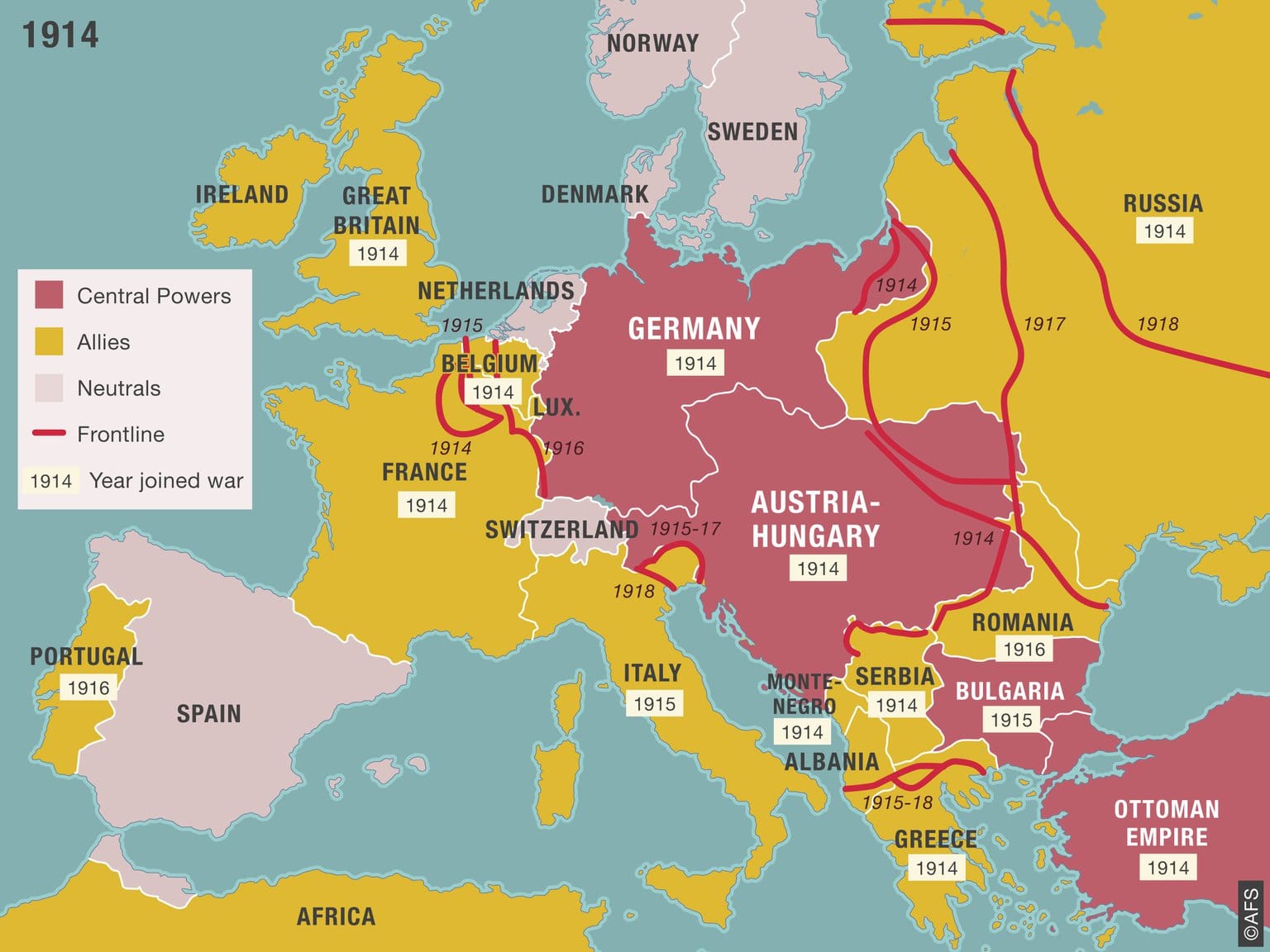
In the second scenario, your players are plopped into the world of Avatar: The Last Airbender while the Fire Nation is attempting to conquering the rest of the world. Your players want to be the good guys. They begin their quest among the Southern Water Tribe.
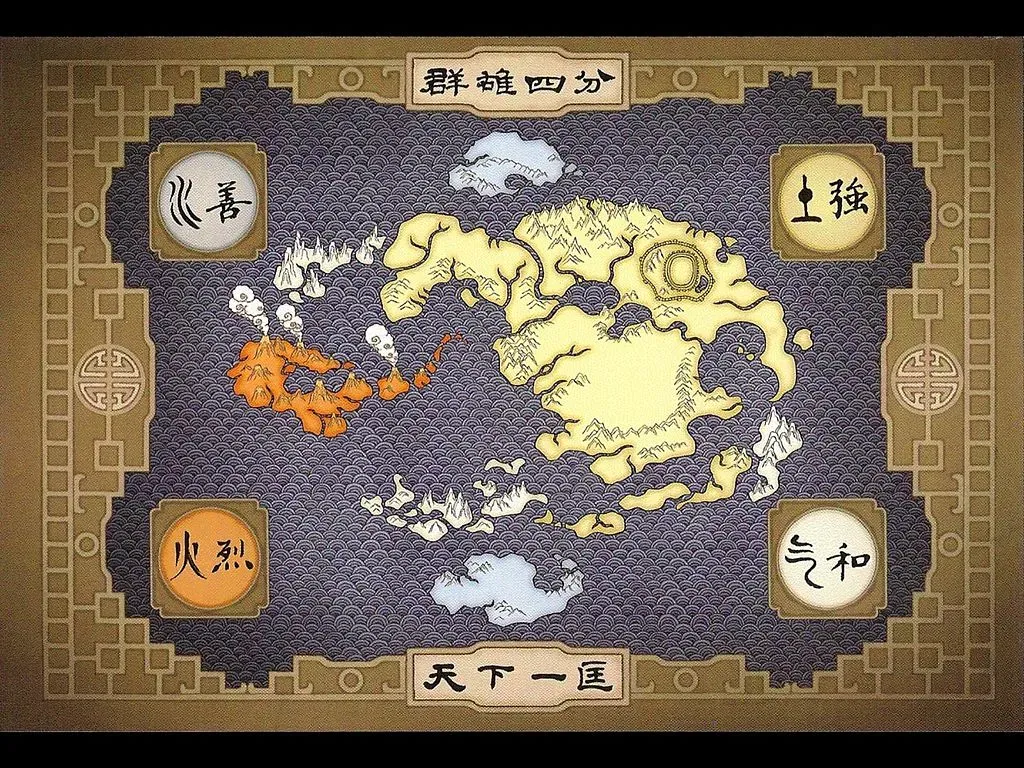
Both of these situations involve war and politics, and their associated quests will almost certainly see the party traveling through dangerous regions. However, with a conflict as complex as World War I in a world as big as (fictional) earth, it’d be nearly impossible to conceptualize the entire conflict, understand the relationships between nations, and remember important NPCs from each region. Sure, the potential play-space is large, but the size and complexity likely muddy the narrative rather than expand it.
Yes, you can confine the party to fictional Estonia for the entire adventure, but then what will they say when you bring up some random fictional Norwegian NPC. They’ll say “wait, what was Norway again?” and you can either give them a long-winded explanation, or you can say “it’s not important.” And if you say, “it’s not important,” then what was the point of designing fictional Norway for your world anyway?
When your players hear some distant nation referenced a few times, they might say “ahh, my GM threw in an off-hand reference to a minor nation for flavor. This world is richer for the details sprinkled in. Nice!” Or, instead, they might say “there are too many fucking lore details that my GM expects me to remember.” This is an actual problem! The more you burden the cognitive load of your players, the less your players will be able to focus on engaging roleplay.
In a small world, you can reasonably expect your party to actually keep track of every single important nation, town, and leader. They might only remember “Lord Such-and-Such is an elf, and I recall he was an asshole that leads the elven kingdom,” but that’s better than saying “I have no idea who that guy was, where he was from, or why he was important.” The smaller the world, the larger a percentage of it you can expect your players to remember.
Your Players Can Feel Important
It’s easier to build a world in which your players are the center of attention when the world is smaller. If a great conflict plunges the world into chaos, can your players make a difference? If it were World War I on fictional earth, the answer would be: probably not! It’s a maximally chaotic conflict with many disparate factions and fronts. It’s hard to imagine your players directly impacting events no matter what heroics they perform.
In a smaller world, your players can defeat one evil king and single-handedly reshape the nature of a conflict.
World Tours Are A Breeze
One of my favorite structures for a lengthier tabletop campaign is the “world tour.” Your players see a map at the start of a campaign, and they think “whoa, there’s lots of cool stuff here. I want to see it all!” 3 years later, they have seen it all. You’ve taken them to all of the bad-ass forts, epic mountains, and gleaming capital cities they saw on the map during session 0.
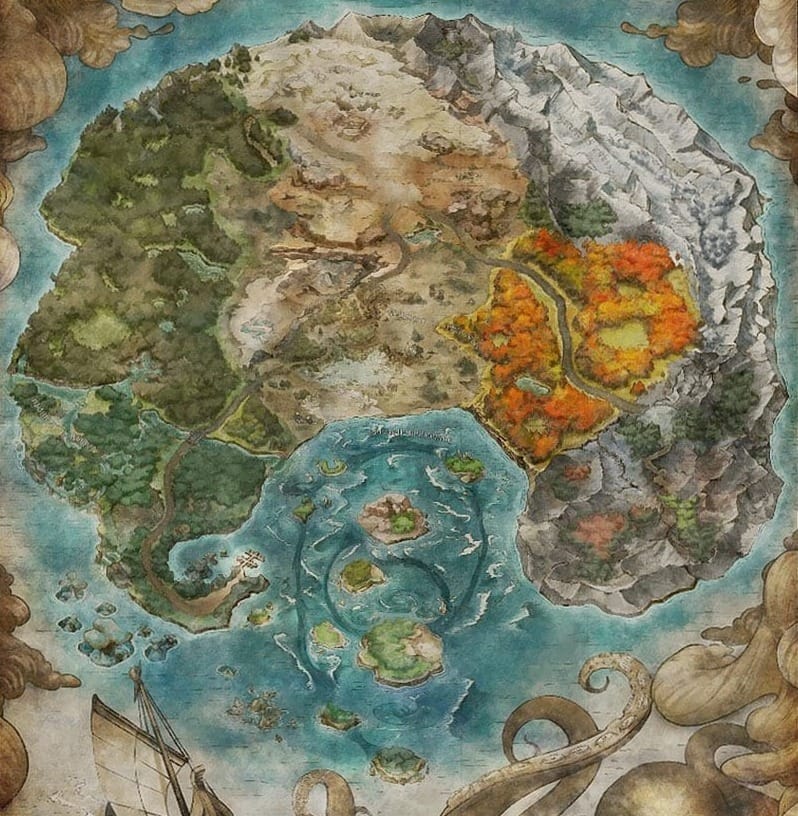
This is something video games very often get right. I’m thinking of something like Metaphor: ReFantazio, a JRPG that’s mostly about trying to get elected king. To accomplish this, you go all over the world in an attempt to reach voters. It’s a great premise, and you better bet that you see every little corner of this modestly sized world. Of course, the world tour is only possible because there are like, a dozen named cities, only 5 of which get much screen-time. Nonetheless, you do see it all over the course of 80ish hours.
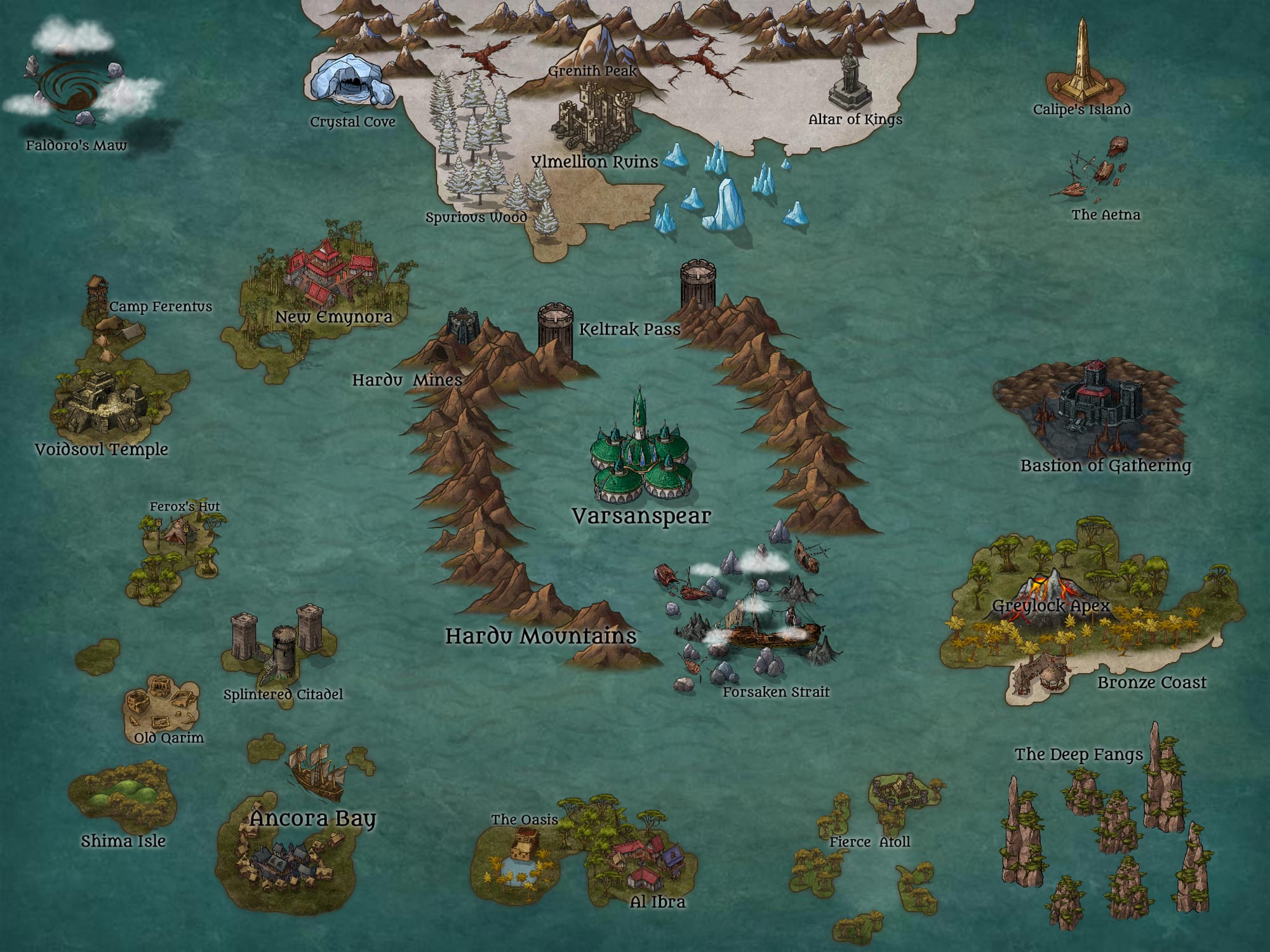
At the start of my longest running campaign that I’ve completed, I opened by showing them a crappy map I threw together in Inkarnate. The small smattering of islands you see above was the whole world I intended to use as my campaign setting. Of every named location on this map, they visited all but 4. I didn’t actually know what I was going to put in each of these locations when I started the campaign… I was mostly just stringing together random words into place names and assuming I’d figure it out down the line. Well, I did! And the fact that this world is hilariously small made that much easier. When it came time for this archipelago’s united forces to converge during the final battle, my players knew exactly who those forces were and how they related to one another. There was no sense of muddled lore or dei ex machina born of misunderstanding.
When your players get to explore every fascinating corner of your world, they feel invested. They don’t think to themselves “hmm, this kinda doesn’t feel like a real world anymore now that I’ve been to literally every named city.” Instead, they get to bathe in each and every bit of compelling worldbuilding you’ve prepared for them. Nothing goes to waste. By the end of the campaign, they feel like they fully know your world, and there is intrinsic value in feeling like you’ve truly inhabited a place. Whatever verisimilitude you feel you’ve lost by shrinking your scale, you’ve gained it back and more by giving your players comprehensive exploration. You’ve been perfectly efficient with your worldbuilding.
Go Easy On Yourself
This is very simple, but I cannot overstate how important it is: worldbuilding is work, and even though it’s fun, it can very quickly get out of hand. You start by making a realistically sized world, and the next thing you know you’re making a list of 100 cities to put in one of your 100 nations. In the back of your mind, you know those details aren’t important, but you don’t want to start your next session until you at least have a handle on what the important factions are. All of a sudden, you’re delaying game night because you just need to do a bit more writing.
Editing is hard. Instead of editing, start small and only create stuff you won’t have to cut.
The Classic Example
You know what’s a great small world? Middle Earth. Now, you Silmarillion heads are going to tell me that I’m crazy, that that world is actually huge and complex and I don’t know what I’m talking about. But I am not talking about the maximally detailed version that’s implied by associated texts and tie-in media. I’m talking about the version of Middle Earth that’s basically just hobbit land, Rohan, Gondor, Mordor, a handful of cool points of interest (elf land, a few dwarf mountains, Fangorn Forest, the Dead Marshes), and then vague gestures at distant lands (Avallónë to the west, wherever the hell the Haradrim are from, and then maybe some spooky demon places below).
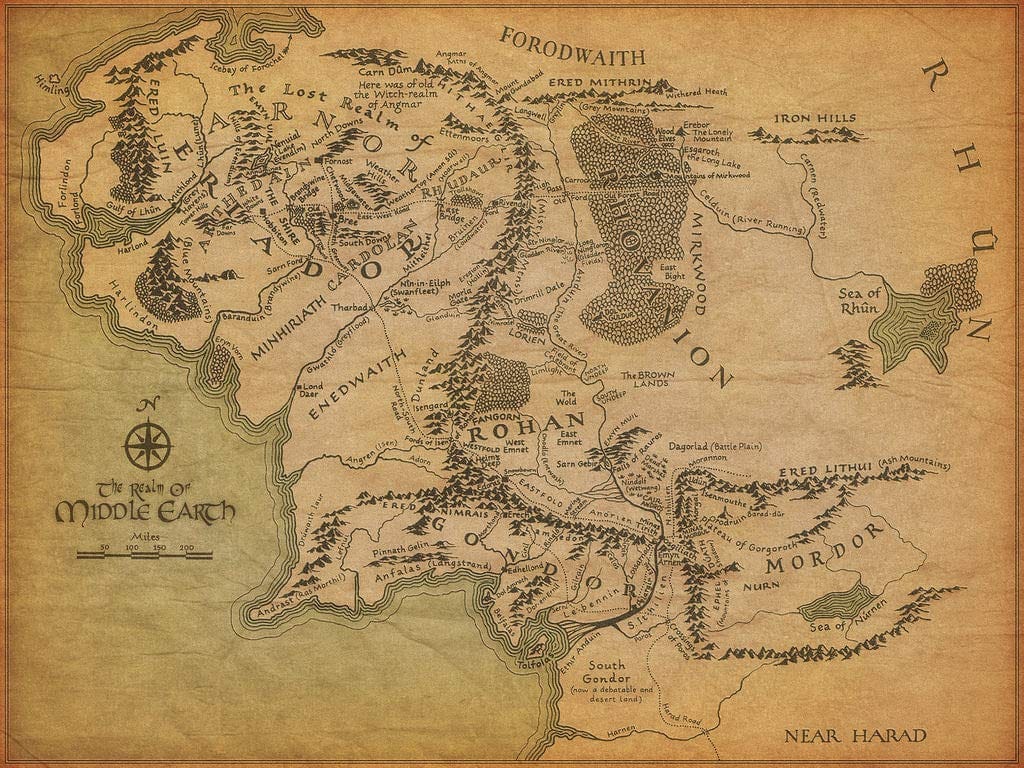
This is legitimately good design for an adventure! Your players can keep the whole thing in their head at once, but there’s still lots of variety with enough total content for you to see pretty much everything in the span of three big books and one little book one big-ass tabletop campaign.
Compare the list of cities in Middle Earth (aka Arda) with the list of cities in the Forgotten Realms (aka Toril). Now, granted, the Forgotten Realms list includes cities in Shadowfell, the Feywild, and the elemental planes, but even then… 415 is a lot more than 80. Is the Forgotten Realms 5x as richly detailed as Middle Earth? I think not. Pack your compelling content into a smaller package, and your players will more easily get attached.
What Is a World?
This whole post, I’ve been using “world” and “campaign setting” mostly interchangeably, but I suppose it’s worth dipping into the difference. When I say “world,” I don’t necessarily mean “planet.” I mean the full extent of the material space your players can explore. The world of Arda from The Lord of the Rings novels is larger than the big map contained within the book. However, the fact that you barely see Harad on this map tells you “don’t worry ‘bout all that.” For the sake of the narrative, the “world” is bounded to what you see in the map.
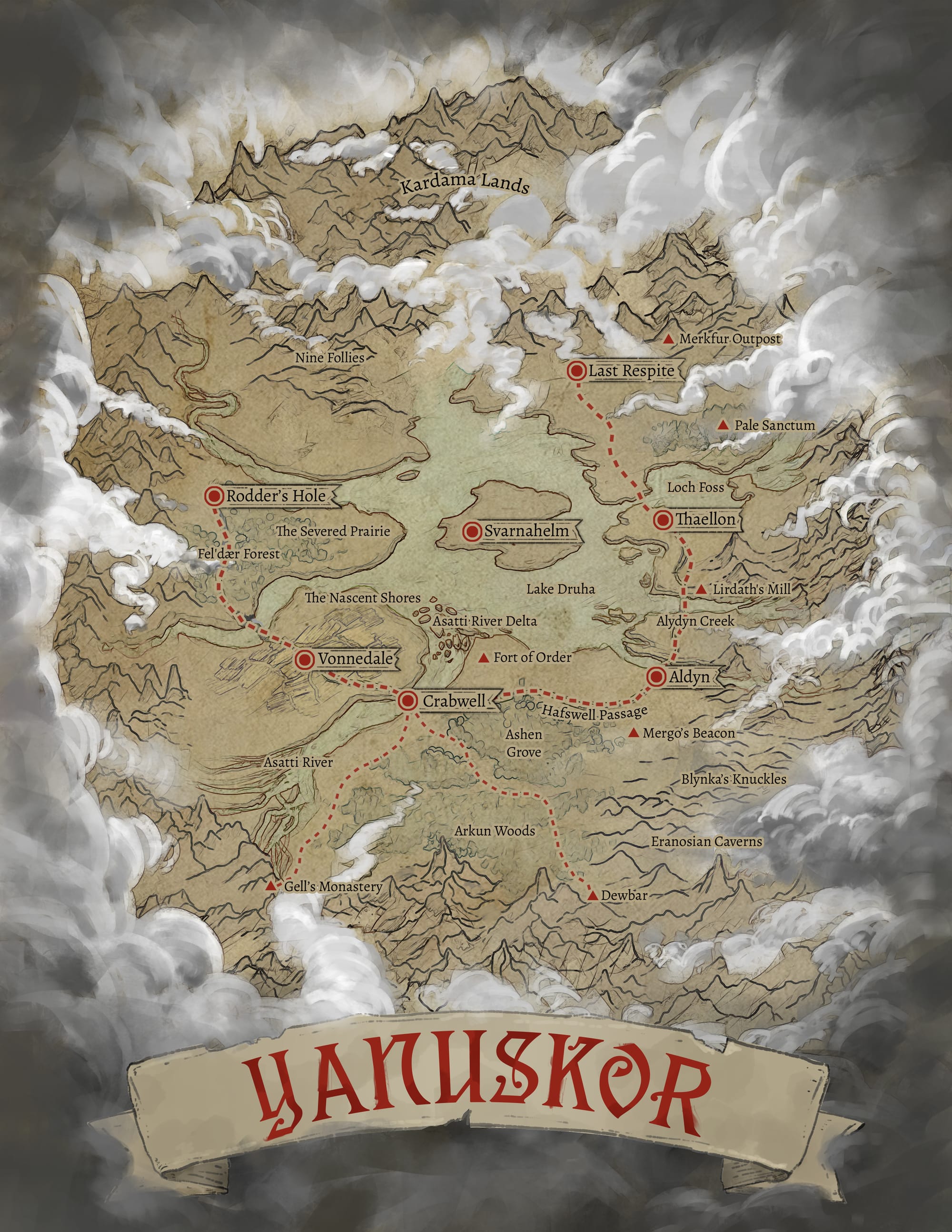
Sometimes, in my campaign, I imply that there is a much wider world that we just aren’t touching on in a given story, and sometimes I say “no, this world is quite literally very small.” My world of Yanuskor (the campaign setting in which you’ll find the Borough Bound cities of Crabwell and Svarnahelm) is intentionally tiny. There are impassable mountains surrounding it, and only about a dozen named cities. Does that make it feel less real? You can certainly quibble about how likely it is that civilization would flourish given the tiny dimensions of the world, but my players have never had a problem with that. The setting was designed to explore a couple keep themes (excess vs. restraint, the oppressive nature of status quo politics, and the influence of a small number of legendary historical figures), and thus I knew I didn’t need much total space. Yanuskor is exactly as big as it needs to be to tell the stories I want to tell.
On the flipside, the world in which I am running a Western-themed campaign is just called “the Frontier.” There are mountains to the west and an ocean to the east. There’s a kingdom on the other side of that ocean, and plenty of lands beyond that, but the campaign is only about the Frontier, and thus that is the world for this campaign. I have done 0 prep work to establish what the rest of the world looks like. When the politics of the imperial kingdom are referenced, I answer obliquely. It is okay to focus on only what is important. The planet doesn’t need to be complete for your world to feel fully realized.
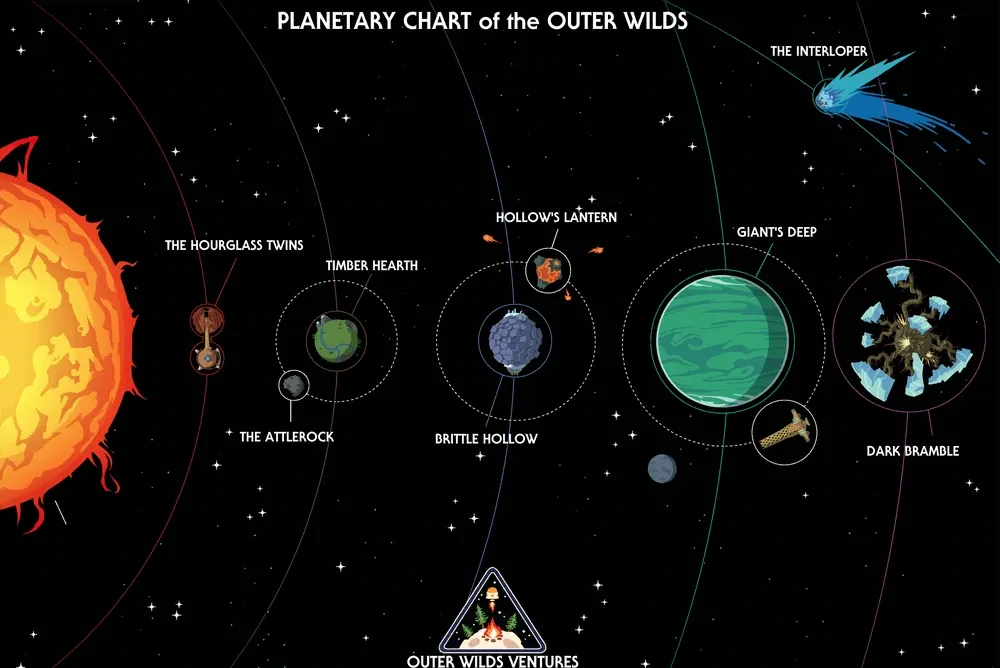
The Appeal of Small Worlds
A small world is something your players can feel invested in. They know its inhabitants, they understand its politics, they know the stake of their involvement, and their involvement likely feels impactful. You’ve saved yourself the effort of writing reams of texts that will be irrelevant at best and actively bore your players at worst. Your players can explore any areas they find fascinating, and when it comes time for the climax, they can feel as though they’ve made the right choices given their deep involvement in the setting. When the campaign is through, your friends will be reciting facts about your world like walking encyclopedias because—ultimately—the total amount of details you expected them to learn is quite manageable.
Big worlds have an allure. You want a land full of mystery where the stakes feel epic, but scaling down can give your players a sense of immersion—born of deep familiarity—that is even more rewarding.

